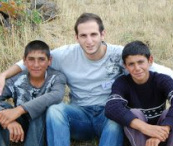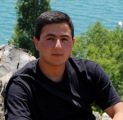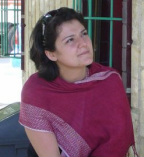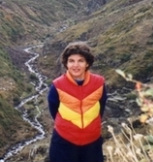History
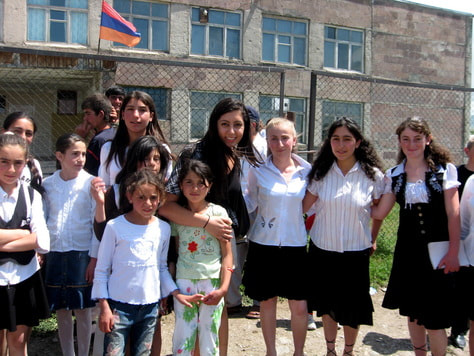
Imagine living through a cold winter, where the snow is so heavy you are unable to leave your village for six months. There are no roads, no markets, and no doctors. All you have is your family, your home, your school and your faith. The villagers of Akhpradzor have lived through this every winter for generations. This village, isolated on the mountains of eastern Armenia, has no open roads from October to April—yet the villagers choose to stay on their land despite the circumstances: “We persevere! How can we leave our homeland, our mountain? We have to protect our country’ s borders!” says Ginevard, the principal Akhpradzor's only school.
A trip to this small, isolated village in the summer of 2009 served as a wake-up call for Nanor Balabanian, an Armenian UCSB student. She was working to make a difference in the world, and so, using her video camera as her only instrument of change, she gathered stories and interviewed the villagers. In the meantime, as the intern at the UN Development Program of Armenia, she was encouraged to go beyond filming a documentary and take action in promoting development. Balabanian designed an educational day camp, according to the needs of the village, that taught children basic skills in first-aid, English, arts, dance and computer skill. She hoped that with this camp, the students would gain skills that could help the villagers in the absence of resources such as doctors, art teachers, and extra-curricular activities.
Upon leaving Armenia, Balabanian felt it would be very important to fundraise enough money to fix the road that led to the main highway. However, her dream of helping fix the broken road soon appeared to be an unreasonable solution. After much research, she realized fixing the road would not be a permanent solution to the problem, since the heavy snow would destroy and damage the roads every winter.
In the beginning, the goal of the Hidden Road Initiative was to establish Internet connection in the remote village, thus creating a virtual road that would be a permanent and innovative solution to a key problem of the village—isolation. Internet would aid in combating poverty, connecting the villagers to the rest of the world, empowering the new generation of students by providing access to new resources of learning through e-education, promoting democratic development, and encouraging civic engagement and government transparency.
Since 2011 however, HRI has evolved to provide more educational and leadership opportunities for students in different villages through scholarship programs, development programs, as well as summer camps.
A trip to this small, isolated village in the summer of 2009 served as a wake-up call for Nanor Balabanian, an Armenian UCSB student. She was working to make a difference in the world, and so, using her video camera as her only instrument of change, she gathered stories and interviewed the villagers. In the meantime, as the intern at the UN Development Program of Armenia, she was encouraged to go beyond filming a documentary and take action in promoting development. Balabanian designed an educational day camp, according to the needs of the village, that taught children basic skills in first-aid, English, arts, dance and computer skill. She hoped that with this camp, the students would gain skills that could help the villagers in the absence of resources such as doctors, art teachers, and extra-curricular activities.
Upon leaving Armenia, Balabanian felt it would be very important to fundraise enough money to fix the road that led to the main highway. However, her dream of helping fix the broken road soon appeared to be an unreasonable solution. After much research, she realized fixing the road would not be a permanent solution to the problem, since the heavy snow would destroy and damage the roads every winter.
In the beginning, the goal of the Hidden Road Initiative was to establish Internet connection in the remote village, thus creating a virtual road that would be a permanent and innovative solution to a key problem of the village—isolation. Internet would aid in combating poverty, connecting the villagers to the rest of the world, empowering the new generation of students by providing access to new resources of learning through e-education, promoting democratic development, and encouraging civic engagement and government transparency.
Since 2011 however, HRI has evolved to provide more educational and leadership opportunities for students in different villages through scholarship programs, development programs, as well as summer camps.




